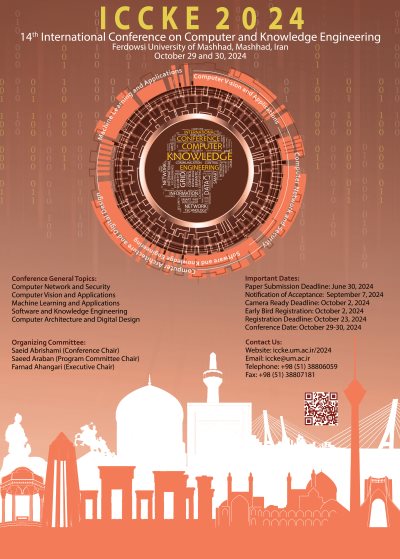0% Complete

Authors :
Keywords :
Abstract :
List of archived papers
Reza Shami Tanha - Mohsen Hooshmand - Mohsen Afsharchi
Mohammad Mehdi Samimi - Alireza Basiri
Shima Esfandiari - Ashkan Sami
Abolghasem Rezaei Khesal - Mehdi Teimouri
Siavash Zaravashan - Sajjad Torabi - Hesam Zaravashan
Anahita Hosseinkhani - Behnam Ghavami
Ali Abedzadeh - Reza Ramezani - Afsaneh Fatemi
Afsaneh Habibi - Fattaneh Taghiyareh
Farzaneh Kazemzadeh - Amir Karian - Mitra Mirzarezaee - Ali Asghar Safaei
Maryam Fattahi Vanani - Hamidreza Shayegh Borujeni - Ali Nourollah




